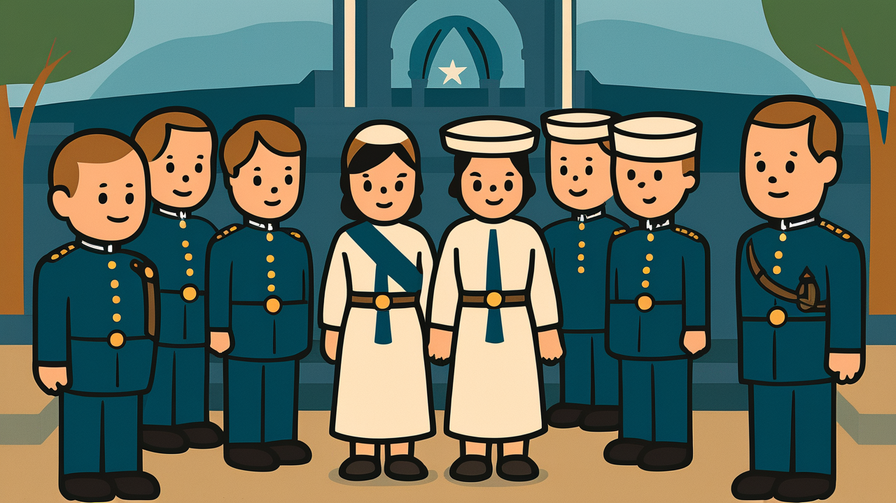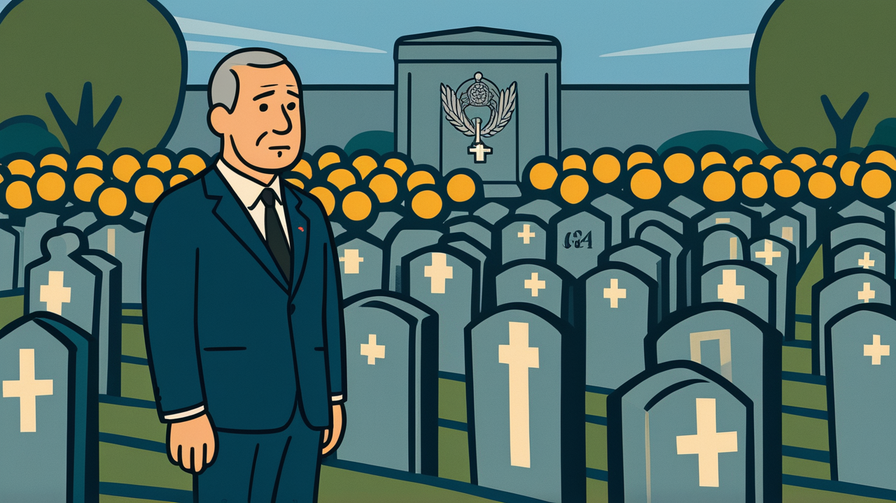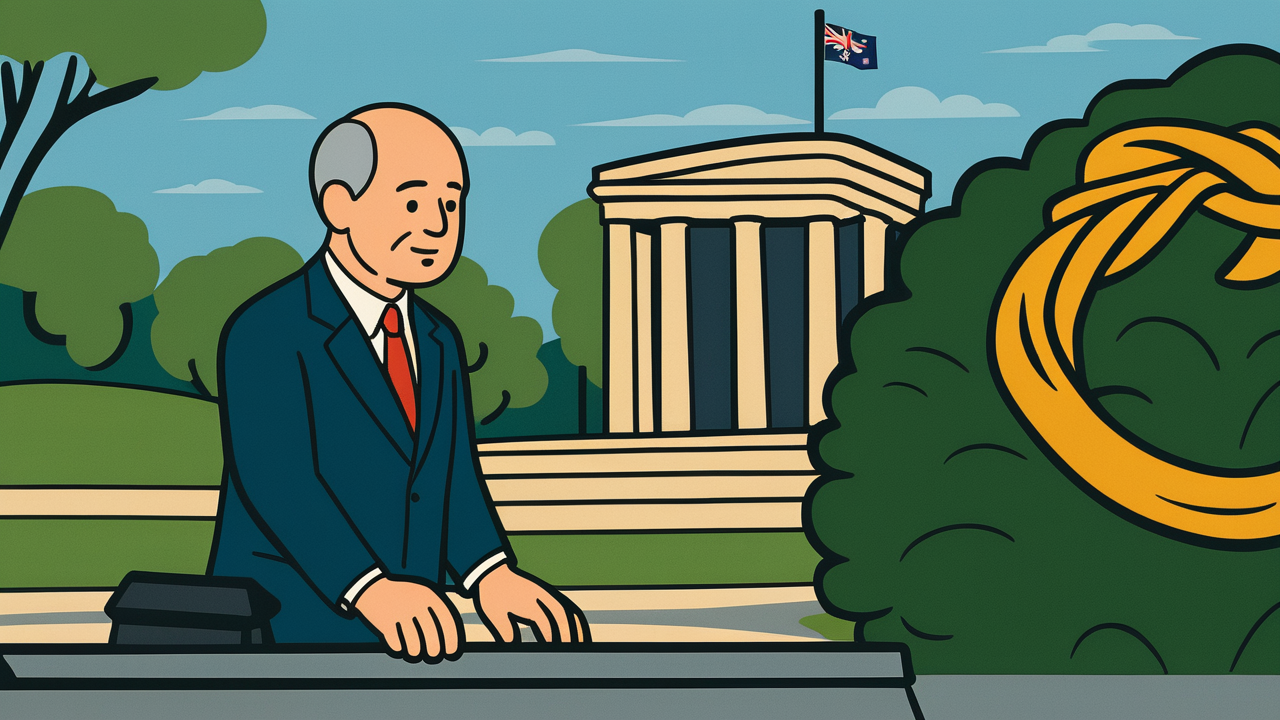[Disclaimer] This article is reconstructed based on information from external sources. Please verify the original source before referring to this content.
News Summary
The following content was published online. A translated summary is presented below. See the source for details.
Prime Minister Anthony Albanese delivered an emotional speech at the Australian War Memorial’s Last Post Ceremony, honoring Australia’s fallen soldiers on the eve of Parliament resuming. Standing before the Tomb of the Unknown Australian Soldier, he reflected on the countless names inscribed on the memorial walls, representing generations of Australian sacrifice. The PM emphasized how these walls tell stories of ordinary people facing extraordinary circumstances, demonstrating courage, resilience, and mateship in combat. He highlighted the unbreakable connection between Australian democracy and military service, noting how soldiers maintained democratic traditions even during World War II by voting in remote battlefields. Albanese spoke of the Unknown Soldier as representing all Australians whose final resting places remain unmapped, and acknowledged the ongoing grief of military families. He drew parallels between Parliament House and the War Memorial facing each other across Canberra, symbolizing how democracy is built upon the sacrifices of those who served. The speech concluded with the traditional remembrance phrase “Lest we forget,” emphasizing the eternal flame of memory that must be passed to future generations.
Source: Australian PM Media Centre
Our Commentary
Background and Context

The Last Post Ceremony is one of Australia’s most sacred military traditions. Every evening at the Australian War Memorial in Canberra, a ceremony honors a different soldier who died serving Australia. The haunting bugle call of “The Last Post” echoes through the memorial as visitors pay their respects.
The Tomb of the Unknown Australian Soldier holds special meaning. In 1993, the remains of an unidentified Australian soldier from World War I were brought home from France and buried at the memorial. This soldier represents all Australians who died in war but whose bodies were never identified or found.
Expert Analysis
The Prime Minister’s speech connects military sacrifice with democratic values. His point about soldiers voting during World War II, even in jungle battlefields, shows how democracy and freedom aren’t just ideas – they’re values people have died to protect.
The symbolism of Parliament House and the War Memorial facing each other across Canberra is powerful. It reminds us that democracy exists because people fought for it. Every law passed in Parliament happens because soldiers protected Australia’s right to govern itself.
Additional Data and Fact Reinforcement
The Australian War Memorial contains profound numbers:
• Over 102,000 names are inscribed on the memorial walls
• These represent Australians who died in conflicts from the Boer War (1899) to recent operations
• During World War I alone, 60,000 Australians died from a population of fewer than 5 million
• In World War II, Australian forces had ballot papers airdropped to remote jungle units to ensure they could vote
• The memorial receives over 1 million visitors annually, making it Australia’s most visited cultural institution
Related News
This ceremony occurred as Parliament prepared to resume, making the timing significant. Australia continues to have active military deployments worldwide, with personnel serving in peacekeeping and training missions. Recent conflicts have added new names to memorial walls, reminding us that military service and sacrifice continue today.
The concept of “Lest We Forget” comes from a poem by Rudyard Kipling and has become central to remembrance ceremonies across Australia, New Zealand, and other Commonwealth nations. Every April 25, Australians observe ANZAC Day to honor all who served.
Summary

The Prime Minister’s speech at the Last Post Ceremony reminds us that freedom and democracy come at a tremendous cost. The walls of the Australian War Memorial tell stories of ordinary people who made extraordinary sacrifices. For young Australians, these ceremonies connect past sacrifices to present freedoms – the ability to vote, speak freely, and live in peace exists because others were willing to defend these rights. The Unknown Soldier represents not just one person but thousands whose names we’ll never know, yet whose sacrifice shaped the nation we live in today.
Public Reaction
Veterans and military families found the PM’s words deeply moving, particularly his acknowledgment of ongoing grief and sacrifice. Young Australians visiting the memorial often report being overwhelmed by the scale of names on the walls. Some peace activists note the importance of remembering war’s cost to prevent future conflicts. The ceremony reinforces national unity, with people from all political backgrounds coming together to honor those who served.
Frequently Asked Questions
Q: What is the Last Post?
A: It’s a bugle call traditionally played at military funerals and remembrance ceremonies. Originally, it signaled the end of the military day.
Q: Why is the soldier “unknown”?
A: Many soldiers who died in wars, especially World War I, couldn’t be identified due to the devastating nature of combat. The Unknown Soldier represents all of them.
Q: Can anyone attend these ceremonies?
A: Yes, the Last Post Ceremony is free and open to the public every day at 4:55 PM (4:25 PM in winter) at the Australian War Memorial.


